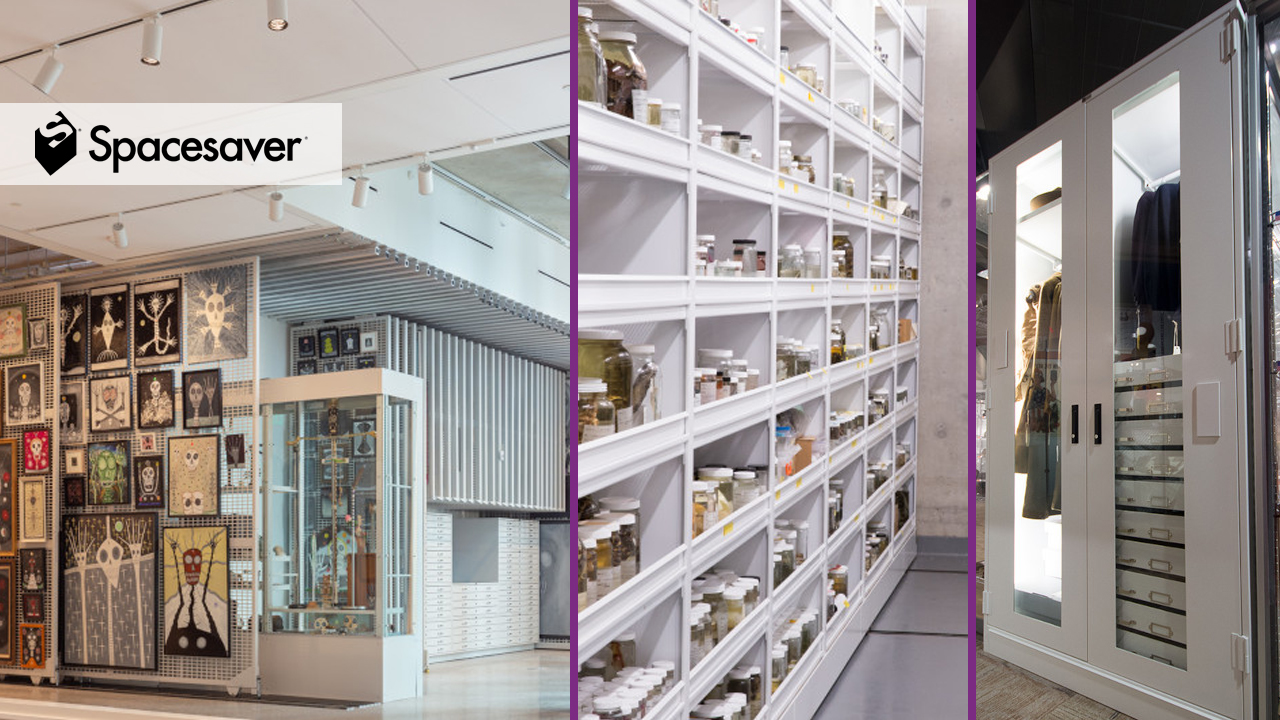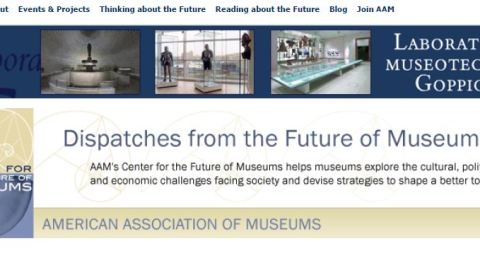
This post is an advertorial written by an organization that serves the museum field. The views, opinions, and positions expressed by the authors and those providing comments are theirs alone and do not necessarily reflect the views, opinions, or positions of AAM or its employees.
Modern-day museums are dedicated to engaging with their communities and are regularly seeking new, creative ways to share more of their collections with their visitors. Curatorial experts are conscious of agents of deterioration, and are dedicated to ensuring the long-term security of their priceless artifacts. Visible storage is a practical way to provide patrons access to a museum’s collections, showcasing the breadth and depth of the collection while also ensuring the preservation of these valuable items. Museum professionals need visible storage projects that balance access and openness with the need to maintain optimal preservation environments and provide secure storage for collections.
Spacesaver Corporation has developed a robust, thoughtful design process that helps guide stakeholders through all necessary considerations as they explore renovations or new construction projects that incorporate visible storage. For example, we worked with a natural history museum to give visitors a glimpse into the research conducted by scientists and scholars in its collections storage area by implementing visible storage solutions that integrate the collections area with public display space.
The area provides researchers with convenient access to a small, climate-controlled portion of the storage area on one side of glass partitions. On the other side are specially constructed Spacesaver carriages that provide a platform for an exhibit that teaches the public about the importance of specimen collection and preservation.
Is visible storage the solution your museum needs to move more of your collections into the public eye? When embarking on this type of project, consider the needs of your collections, the physical space of your museum, and the artifacts that would make the best candidates for visible storage.

Collections Needs
The first step to planning your visible storage project is to conduct an inventory. Be sure to be detailed about it. Make note of all your preservation requirements, and call out delicate items, rare pieces, and other sensitive objects that require specific handling or special attention.
Spacesaver worked with a contemporary art museum where curatorial staff wanted a visible storage solution to supplement exhibitions. After taking a careful inventory, they determined sketches, references, and other two-dimensional works in their collection would complement the currently displayed art and create a more prominent display.
Having this itemized inventory helped staff select flat file cabinets with glass tops as the perfect solutions for the task. Additionally, these cabinets can lock to secure contents and keep artwork organized, while UV-coated glass tops protect artwork and allow visitors to view what is stored inside.
Physical Space
There are several questions to answer when designing a visible storage project. How much square footage is available? How much vertical space is available? Within that area, what obstructions are present? Are there structural columns, ductwork, or other features to design around?
It also important to consider how people currently work in the space. Then ask yourself, how will people need to work in this area in the future? A university art study center weighed these questions, and reached out to its local Spacesaver consultant to engineer a way to better serve those working, studying, and visiting its location.
With a diverse art collection that had grown since being established in the early 1800s, the majority of the items were inaccessible to the campus community and the general public. However, visible storage solutions—including locking museum cabinets with glass doors—transformed the space into an area that incorporated thousands of objects into teaching and study programs. With this modern storage upgrade, students could view the stored objects and complete their class assignments while staff guaranteed the items remained protected.

Visibility
Referring to your inventory list and identifying items that are ideal candidates for visible storage, it’s important to think about the ways these items could be displayed in visible storage systems while still maintaining an optimal preservation environment and ensuring security.
Spacesaver helped an art and science museum fulfill the staff’s objective to display as much of their collection as possible. With hanging art identified as one of the prime candidates for visible storage, museum leaders and architects worked with a Spacesaver consultant to make efficient use of the space. They utilized art rack augmented with black shelving and creative lighting to generate a pleasing aesthetic that made the objects on display stand out. Not only did they achieve the visibility they sought, but plexiglass in front of the art racks guaranteed security and preservation.
Visible storage is a useful solution for museums to make their collections more accessible while preserving these treasures for future generations. If you’re ready to modernize your museum while ensuring your collections’ preservation, contact your local Spacesaver representative to help with your inventory, space assessment, and visible storage design goals.







